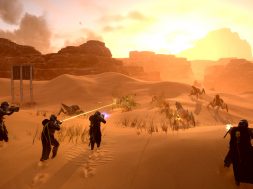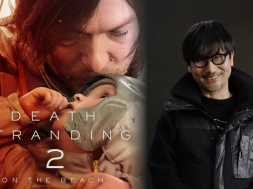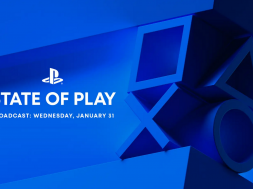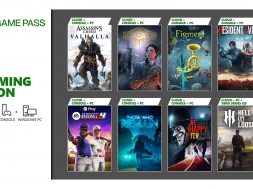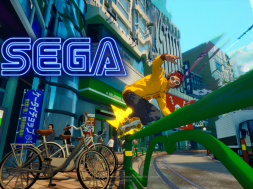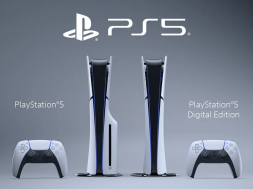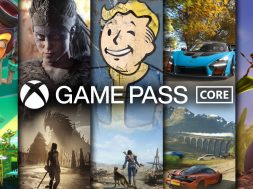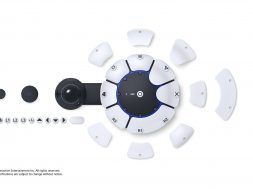I crouch hastily behind some wooden crates, douse my lantern and try to calm down. I have no weapon, I have nowhere to run and I have no help coming. I can hear the creature only a few feet away and getting closer, it’s guttural breathing and heavy footsteps all I could hear over my own pounding temples and the game’s nerve shredding soundtrack. I know I’m playing a game, but safely in the comfort of my own home, I too hold my breath in the hopes I don’t let it know where I am, for fear of being horribly ripped to shreds. This is the experience of playing Amnesia. Yes that old horror game chestnut. The reason I bring that nightmare back up is because I recently found myself locked into a discussion about the difference between unsettling horror versus brutal action based horror games.
As an avid horror movie fan and minor adrenaline junkie, I love being scared, and with games being such an interactive medium, this has always given me the perfect opportunity to scare the pants off myself. In fact, a lot of people like playing scary games; adding fear into game play makes a player feel more accomplished. It’s easy to hold down right trigger and mow your opponents in dust with the latest high-tech weaponry, but limited ammunition and strong, abnormal, disfigured enemies makes a game feel more challenging as you run and hide popping off shots whenever you can. That said, games need to sell. Big triple-A releases need to hit the widest target audience and have a little bit of something for everyone. This need to produce big revenue, as well as developers trying to produce the fresh ways to scare their audience, has split the horror gaming genre into two camps: survival horror and action horror; both having their merits and flaws.
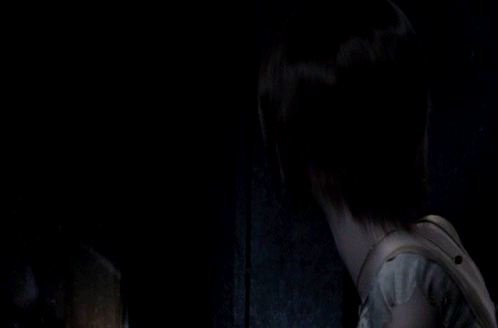 Using fear as a means of engaging an audience is not a new practice. Soothsayer myths and campfire stories have been using it for thousands of years before the computer was first invented. The tradition still holds up and as games quickly became a popular medium, games had to become scary; both to sell to large markets, but also to attract an older audience who may have seen gaming as a children’s activity. Adventure games and RPG’s had dappled in the idea of adding fear elements to video games, but it wasn’t until the early 90’s that the concept blew up. Survival horror was the first to get in on the action with the classic Alone in the Dark, released in 1992. The Lovecraft-ian adventure saw the main character, Edward Carnby investigating a death in haunted house. The player had to solve the puzzle and fend off the supernatural monsters before the evil spirit possessing the house got the better of them.
Using fear as a means of engaging an audience is not a new practice. Soothsayer myths and campfire stories have been using it for thousands of years before the computer was first invented. The tradition still holds up and as games quickly became a popular medium, games had to become scary; both to sell to large markets, but also to attract an older audience who may have seen gaming as a children’s activity. Adventure games and RPG’s had dappled in the idea of adding fear elements to video games, but it wasn’t until the early 90’s that the concept blew up. Survival horror was the first to get in on the action with the classic Alone in the Dark, released in 1992. The Lovecraft-ian adventure saw the main character, Edward Carnby investigating a death in haunted house. The player had to solve the puzzle and fend off the supernatural monsters before the evil spirit possessing the house got the better of them.
The seminal piece of video games horror came in 1993 in the form of Doom. The fast paced action-horror was both the starting point for one of the biggest gaming genres, First Person Shooters. Doom had fast paced action, a punching soundtrack and more than it’s fair share of demonic nasties. While the graphics look more than a little dated right now, the game remains a solid action horror, retaining the ability to make your heart stop as you open a door to a room filled with zombie soldiers and fire throwing demons.
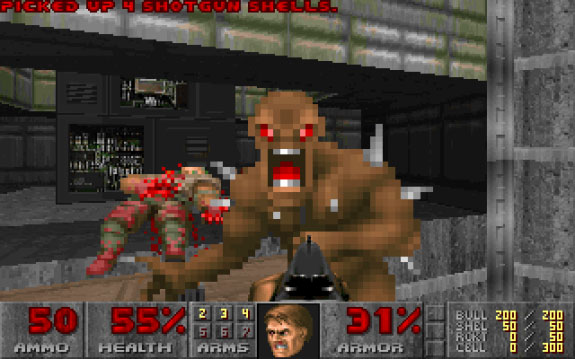
The cult success of Alone in the Dark followed by the commercial success of Doom, helped out a smidge by its notoriety and violence, did however prove that people like being scared, and the both sides of the horror game divide took that and ran with it. Resident Evil, Silent Hill, Parasite Eve and Fatal Frame all launched their series in the mid to late 90’s. As the graphics improved, dual joysticks and the first person shooter took over, the survival horror genre lost its charm as the market became flooded with cheap and easy shooters with some ghosts/zombies/monsters. It wasn’t until the mid 2000’s that the genre fought back. Resident Evil 4 and newcomer F.E.A.R brought action horror to a new level with Resident Evil’s creepy palette, tight gameplay and re-worked story, which sat next to F.E.A.R’s frantic, horrifying, Japanese horror influenced FPS. The indie developers began to get involved too with Frictional games bringing Penumbra: Overture to the world; taking away our love affair with weapons and making us feel weak again.

Action horror games made players feel powerful. They presented you with your fears of something you don’t understand, something grotesque and evil; then let you murder those fears over and over. Making the player armed, even if they have little ammo, meant that the designers had to use either overwhelming hordes of the inherent danger (Left 4 Dead, Resident Evil 4, Doom), to raise the heart rate of the players. There’s a simple pleasure to be found in walking cautiously around an abandoned, broken down house, only to hear an approaching hoard enemies you know you are ready to gun down without mercy. They could also use “jump scares” to great effect, like in games such as Dead Space. Already being stranded on an abandoned wreck of a spaceship, you are met with Xenomorphs, who are only too happy, to leap out of the darkness and charge towards you. Games like these fully utilized our inherent fear of the unnatural. The creatures would retain humanoid characteristics but would be twisted and broken into gruesome shapes. These games also have the largest target audience. They sit well with most gamers willing to give themselves a fright, as they don’t require huge amounts of puzzle solving and sneaking about, whilst holding onto the storytelling and atmospheric elements required.
Survival horror games, like Amnesia, Fatal Frame and the early Silent Hill games place their focus on immersing the player in the world, and using the environment to terrify the player of immediate danger. The fear of the unknown is a powerful weapon and that is a common feature in the genre. These games don’t need flashy graphics or stunning set pieces, what fuels them is story and letting the player fear whatever demon the game is presenting them with. Silent Hill 2 is a stunning example of this type of game design. 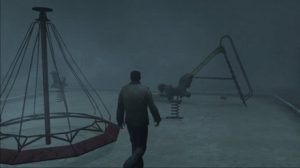 With the early graphical limitations of the Playstation 2, the game world was made eerily foggy so that the render distance wouldn’t strain the game. The fog added to the eerie atmosphere of the game and added to the feeling of loneliness and helplessness. Indie developers also found this advantageous as they could get a slice of the survival horror pie without having huge teams and massive budgets. Slender, Dear Esther and Outlast are shining examples of how indie developers used their tools perfectly to hone in on our base fears. This I feel is where action horror games struggle. Yes, they can be atmospheric and tense and make you jump out of your skin as a creature pops out of a vent in the floor and charges at you, fully intent on dining on your innards (fava beans and fine Chianti optional). Games like Dead Space, Bioshock and the later installments of the Resident Evil series, have creepy monsters in their droves but it’s hard to provide the same level of fear down the barrel of a loaded gun the same way spotting the shadow of a monster you have no means of fighting can send chills down your spine.
With the early graphical limitations of the Playstation 2, the game world was made eerily foggy so that the render distance wouldn’t strain the game. The fog added to the eerie atmosphere of the game and added to the feeling of loneliness and helplessness. Indie developers also found this advantageous as they could get a slice of the survival horror pie without having huge teams and massive budgets. Slender, Dear Esther and Outlast are shining examples of how indie developers used their tools perfectly to hone in on our base fears. This I feel is where action horror games struggle. Yes, they can be atmospheric and tense and make you jump out of your skin as a creature pops out of a vent in the floor and charges at you, fully intent on dining on your innards (fava beans and fine Chianti optional). Games like Dead Space, Bioshock and the later installments of the Resident Evil series, have creepy monsters in their droves but it’s hard to provide the same level of fear down the barrel of a loaded gun the same way spotting the shadow of a monster you have no means of fighting can send chills down your spine.
There is no sign that the action horror or survival horror genre is taking its leave any time soon. While we may have almost lost touch with it during ‘The Great Zombie Obsession’, it is a genre that will simply evolve into new fears. Technological developments like the Oculus Rift and the potential to add psychological elements to games are only going to bring us deeper into the rabbit hole of horror gaming, and scare the living shit out of us again, and again and again; which I cannot wait for. Weirdly.
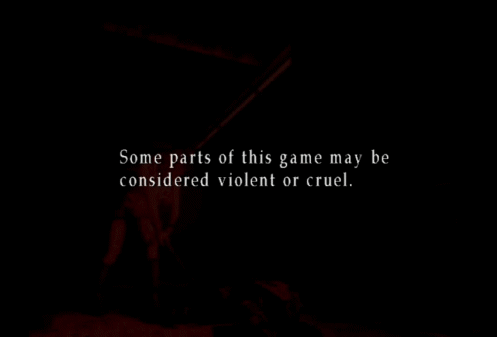
0
0
